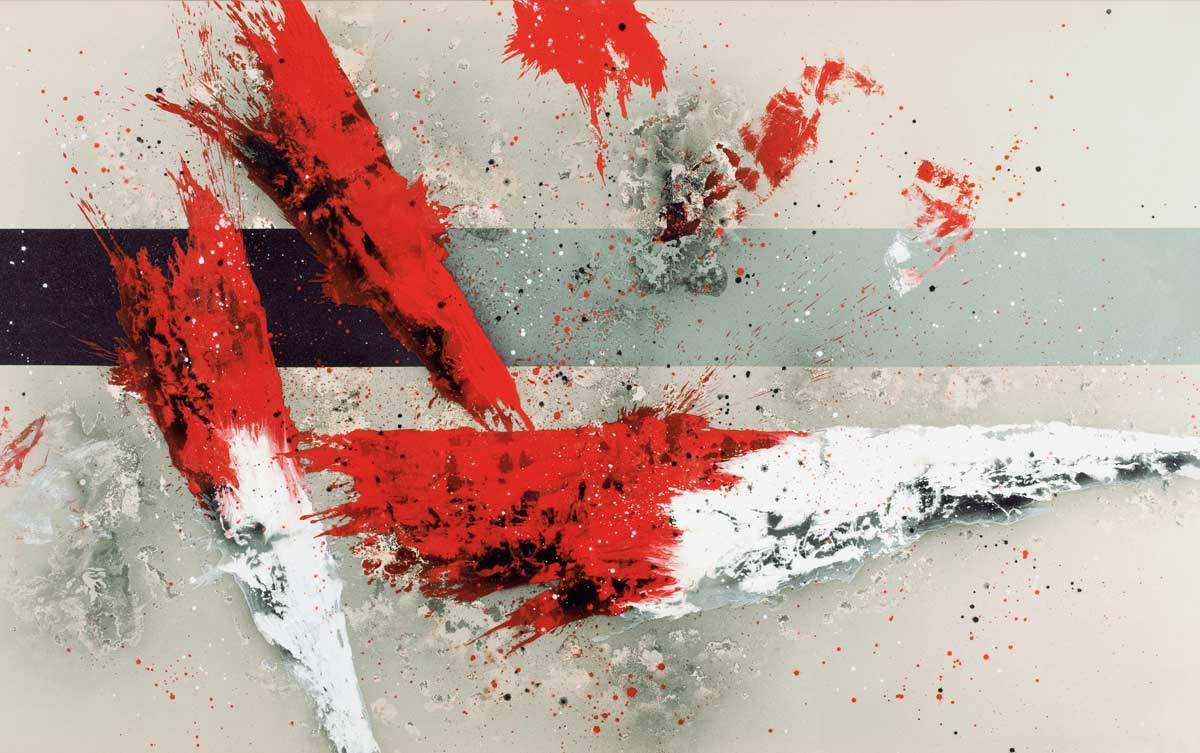
RORSCHACH HEADS III
RORSCHACH HEADS III (2009 – 2012)
All of José Manuel Ciria’s series since 1990 draw directly on his A.D.A. (Automatic Deconstructive Abstraction) and D.A.A. (Dynamic Alfa Alignments) theoretical and conceptual investigation platform for the possibilities of painting.
The only series to escape from those fields of investigation is Rorschach Heads III (2009-2012) and we should look for its catalyst in the artist’s personal motivations. On one hand, the catalyst was the brain tumor his father suffered from and the pain of his loss, and on the other hand it was an event that occurred at almost the same time, which was the trip Ciria made to Easter Island. Grief and desperation, united with his encounter with the Moai drove the artist to paint a two by two meter head when he came back to his studio in New York. Ciria has commented on at least one occasion that «that painting overwhelmed me.»
The artist decided to make a series that he initially intended to be private and was not going to be shown in galleries or museums. When Stefan Stux, Ciria’s gallerist in New York, visited his studio he convinced him to change his mind and he organized a big exhibition in his gallery, which would later be extended in the AMoA in Texas.
The faces that appear in the Rorschach Heads III series call up human emotions: fear, fury, pain, aggressiveness, estrangement, rage, solitude, madness, or unconformity. They are paintings aimed at the conscience and that often call for tenderness and understanding. They are, ultimately, portraits without any conceptual divagations or formal exploration other than what is produced out of the wish to turn painting into a fascinating pictorial event. Donald Kuspit recognized that Ciria’s heads are actually his best paintings and his most abstract ones, because the entire gamut of abstraction is immersed in the interstices of every impact and seam of the stains.
There are different blocks of families of work within the Rorschach Heads III series. The first group would be the one that stays closest to a realistic representation of the faces. The second would be the heads with a grotesque appearance and that are far removed from any vestige of realism. And, a third block would be a freely invented one, that moves between the two previous groups.
